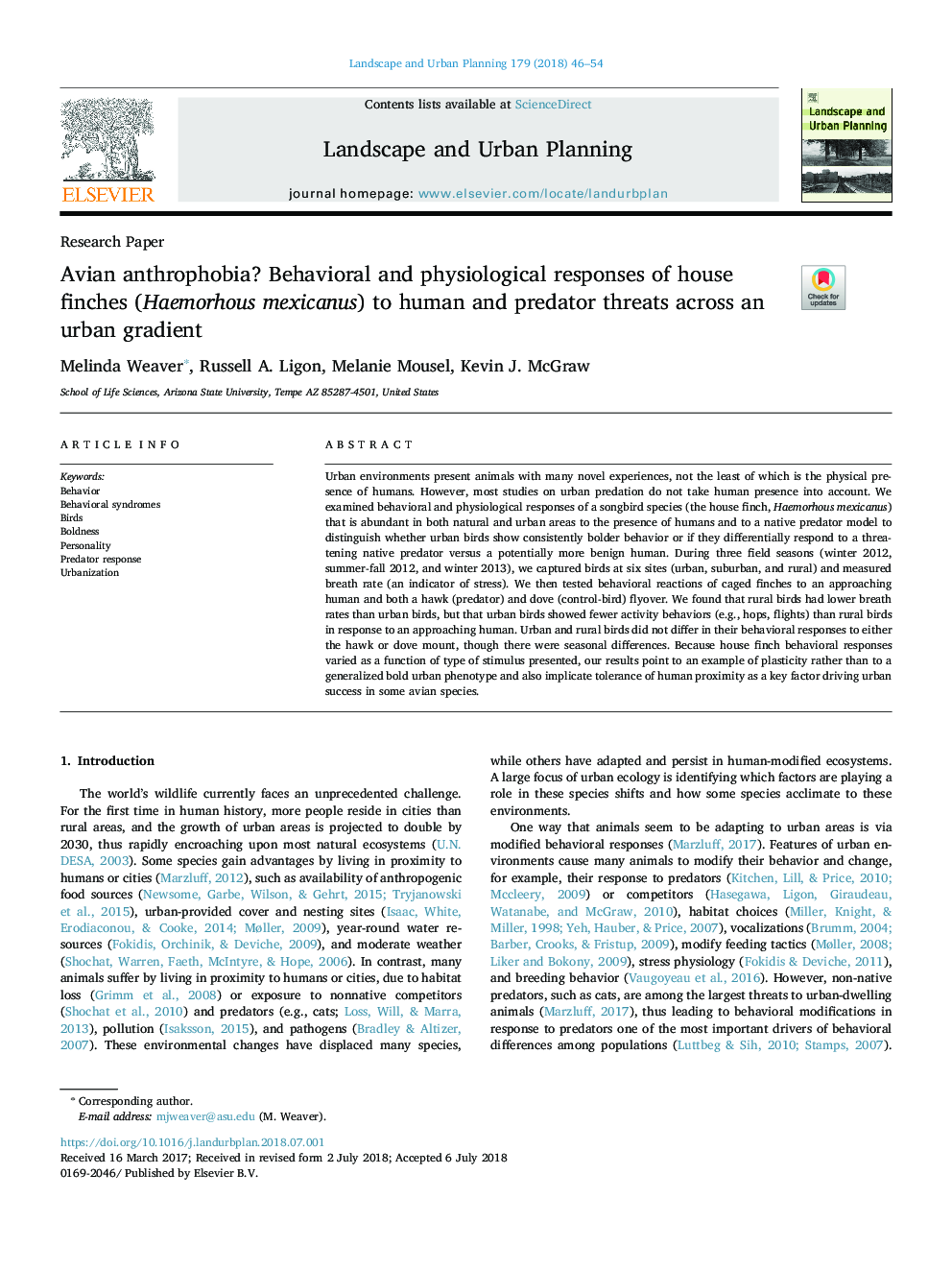| Article ID | Journal | Published Year | Pages | File Type |
|---|---|---|---|---|
| 7459423 | Landscape and Urban Planning | 2018 | 9 Pages |
Abstract
Urban environments present animals with many novel experiences, not the least of which is the physical presence of humans. However, most studies on urban predation do not take human presence into account. We examined behavioral and physiological responses of a songbird species (the house finch, Haemorhous mexicanus) that is abundant in both natural and urban areas to the presence of humans and to a native predator model to distinguish whether urban birds show consistently bolder behavior or if they differentially respond to a threatening native predator versus a potentially more benign human. During three field seasons (winter 2012, summer-fall 2012, and winter 2013), we captured birds at six sites (urban, suburban, and rural) and measured breath rate (an indicator of stress). We then tested behavioral reactions of caged finches to an approaching human and both a hawk (predator) and dove (control-bird) flyover. We found that rural birds had lower breath rates than urban birds, but that urban birds showed fewer activity behaviors (e.g., hops, flights) than rural birds in response to an approaching human. Urban and rural birds did not differ in their behavioral responses to either the hawk or dove mount, though there were seasonal differences. Because house finch behavioral responses varied as a function of type of stimulus presented, our results point to an example of plasticity rather than to a generalized bold urban phenotype and also implicate tolerance of human proximity as a key factor driving urban success in some avian species.
Related Topics
Life Sciences
Agricultural and Biological Sciences
Ecology, Evolution, Behavior and Systematics
Authors
Melinda Weaver, Russell A. Ligon, Melanie Mousel, Kevin J. McGraw,
